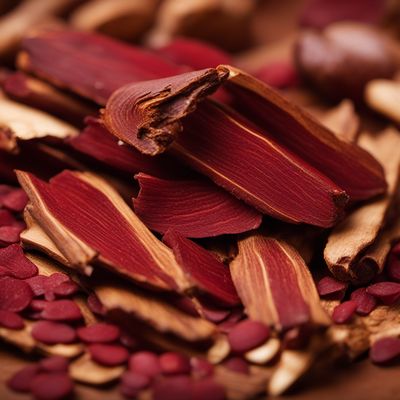
Ingredient
Blond psyllium (infusion seeds, husks)
The Fiber Powerhouse: Unveiling the Secrets of Blond Psyllium
Blond psyllium is a plant native to the Mediterranean region and is cultivated for its seeds and husks. The seeds are small, oval-shaped, and pale yellow, while the husks are the outer covering of the seeds and have a light brown color. Both the seeds and husks are rich in soluble fiber, which gives them a gel-like consistency when mixed with water. This unique characteristic makes blond psyllium a popular ingredient in various food products and supplements. It has a mild, slightly nutty flavor and a fine, powdery texture.
Origins and history
Blond psyllium has a long history of use in traditional medicine and culinary practices. It has been cultivated and consumed for centuries in regions like India, Iran, and Pakistan. The use of blond psyllium as a dietary supplement gained popularity in the late 20th century due to its potential health benefits, particularly in promoting digestive health and managing cholesterol levels.
Nutritional information
Blond psyllium is a nutritional powerhouse, packed with dietary fiber, essential minerals, and antioxidants. It is low in calories and contains no fat or cholesterol. Just one tablespoon of blond psyllium husk provides approximately 30 calories, 8 grams of dietary fiber, and small amounts of calcium, iron, and potassium.
Allergens
Blond psyllium is generally considered safe for most individuals, but it may cause allergic reactions in some people, especially those with a known allergy to psyllium or related plants. It is advisable to consult a healthcare professional if you have any concerns or known allergies.
How to select
When selecting blond psyllium, look for a reputable brand that offers high-quality, organic options. Check the packaging for the presence of any additives or fillers. Opt for whole blond psyllium husks or ground seeds, as they retain their nutritional value better than processed forms.
Storage recommendations
To maintain the freshness and quality of blond psyllium, store it in an airtight container in a cool, dry place. Avoid exposure to moisture, heat, or direct sunlight, as these can degrade its nutritional properties. Properly stored, blond psyllium can retain its quality for up to one year.
How to produce
Growing blond psyllium requires specific climatic conditions, including warm temperatures and well-drained soil. It is best suited for cultivation in regions with a Mediterranean climate. However, due to its specialized requirements, it is recommended to leave the production of blond psyllium to experienced farmers.
Preparation tips
To use blond psyllium, it is essential to mix it with an adequate amount of liquid, such as water or juice, to allow it to absorb and form a gel-like consistency. This gel can be added to smoothies, baked goods, or used as a thickening agent in soups and sauces. It is important to drink plenty of water when consuming blond psyllium to prevent any potential digestive discomfort.
Culinary uses
Blond psyllium is commonly used as a dietary supplement and added to various food products to increase their fiber content. It is often incorporated into gluten-free baking recipes to improve texture and moisture retention. Additionally, it can be used as a binding agent in vegetarian or vegan recipes, replacing eggs or other binding agents.
Availability
Blond psyllium is commonly available in health food stores, specialty grocery stores, and online retailers. It is cultivated in countries like India, Iran, Pakistan, and some Mediterranean regions.
More ingredients from this category » Browse all

Lapacho (infusion bark)
The Healing Elixir from the Forest

Cocoa (infusion husks)
The Essence of Cocoa Infusion Husks

Guarana (infusion seeds)
The Energizing Amazonian Seed

Condurango (infusion bark)
The Enigmatic Condurango: A Bark with a Story

Other herbal infusion materials from any other parts of the plant
Botanical Brews: Exploring the World of Herbal Infusions

Cupuaçu
The Exotic Delight: Cupuaçu - A Tropical Treasure for Culinary Adventures

Red sandalwood (infusion bark, wood)
The Scarlet Elixir

Fragrant sumac (infusion bark)
The Aromatic Essence: Fragrant Sumac

China (infusion bark)
Ancient Bark Elixir

Witch hazel (infusion bark)
Nature's Astringent

Fir (infusion shoots)
Exploring the Aromatic World of Fir Infusion Shoots

Cherries (sweet) (infusion stems)
The Juicy Gems of Summer
